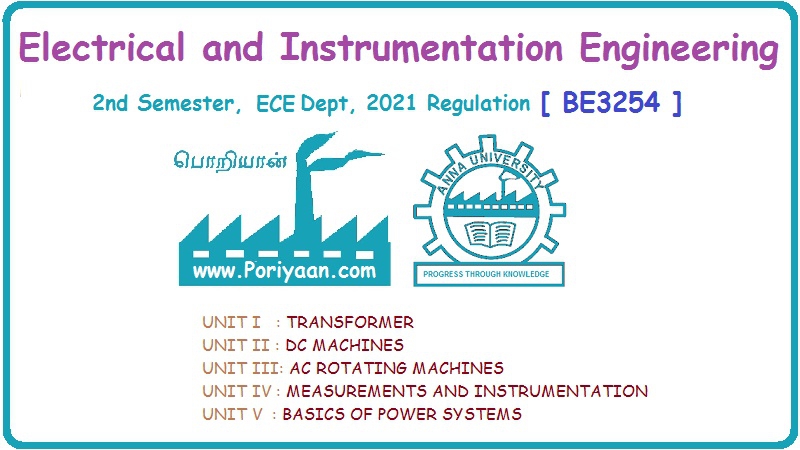Electrical and Instrumentation Engineering: Unit III: AC Rotating Machines
Working Principle of Three Phase Induction Motor
Induction Motors are the most commonly used motors in many applications. These are also called as Asynchronous Motors, because an induction motor always runs at a speed lower than synchronous speed. Synchronous speed means the speed of the rotating magnetic field in the stator.
INTRODUCTION
Induction
Motors are the most commonly used motors in many applications. These are also
called as Asynchronous Motors, because an induction motor always runs at a
speed lower than synchronous speed. Synchronous speed means the speed of the
rotating magnetic field in the stator.
WORKING OF THREE PHASE INDUCTION MOTOR
In
a DC motor, supply is needed to be given for the stator winding as well as the
rotor winding. But in an induction motor
only the stator winding is fed with an AC supply.
i.
Alternating flux is produced around the stator winding due to AC supply. This
alternating flux revolves with synchronous speed. The revolving flux is called
as "Rotating Magnetic Field" (RMF).
ii.
The relative speed between stator RMF and rotor conductors causes an induced
emf in the rotor conductors, according to the Faraday's law of electromagnetic
induction. The rotor conductors are short circuited, and hence rotor current is
produced due to induced emf. That is why such motors are called as induction
motors (This action is same that occurs in transformers, hence induction motors
can be called as rotating transformers.).
iii. Now, induced current in rotor will also produce alternating flux around it. This rotor flux lags behind the stator flux. The direction of induced rotor current, according to Lenz's law, is such that it will tend to opposite the cause of its production.
iv.
As the cause of production of rotor current is the relative velocity between
rotating stator flux and the rotor, the rotor will try to catch up with the
stator RMF. Thus the rotor rotates in the same direction as that of stator flux
to minimize the relative velocity. However, the rotor never succeeds in
catching up the synchronous speed. This is the basic working principle of
induction motor of either type, single phase of three phase.
Synchronous Speed:
The rotational speed of the rotating magnetic field is called as synchronous speed.

where,
f
= frequency of the supply, P = number of poles.
Slip:
Thus
from the working principle of three phase
induction motor it may observed that the rotor speed should not reach the
synchronous speed produced by the stator. If the speeds equals, there would be
no such relative speed, so no emf induced in the rotor, a and no current would
be flowing, and therefore no torque would be generated. Consequently the rotor
can not reach the synchronous speed. The difference between the stator
(synchronous speed) and rotor speeds is called the slip. The rotation of the
magnetic field in an induction motor has the advantage that no electrical
connections need to the rotor. Rotor tries to catch up the synchronous speed of
the stator field, and hence it rotates. But in practice, rotor never succeeds
in catching up. If rotor catches up the stator speed, there wont by any
relative speed between the stator flux and the rotor, hence no induced rotor
current and no torque production to maintain the rotation. However, this won't
stop the motor, the rotor will slow down due to lost of torque, the torque will
again be exerted due to relative speed. That is why the rotor rotates at speed
which is always loss the synchronous speed.
The
difference between the synchronous speed (NS) and actual speed (N)
of the rotor is called as slip.

Thus
the three phase induction motor is:
i.
Self-starting.
ii.
Less armature reaction and brush sparking because of the absence of commutators
and brushes that may cause sparks.
iii.
Robust in construction.
iv.
Economical.
v.
Easier to maintain.
Electrical and Instrumentation Engineering: Unit III: AC Rotating Machines : Tag: : - Working Principle of Three Phase Induction Motor
Related Topics
Related Subjects
Electrical and Instrumentation Engineering
BE3254 - 2nd Semester - ECE Dept - 2021 Regulation | 2nd Semester ECE Dept 2021 Regulation
